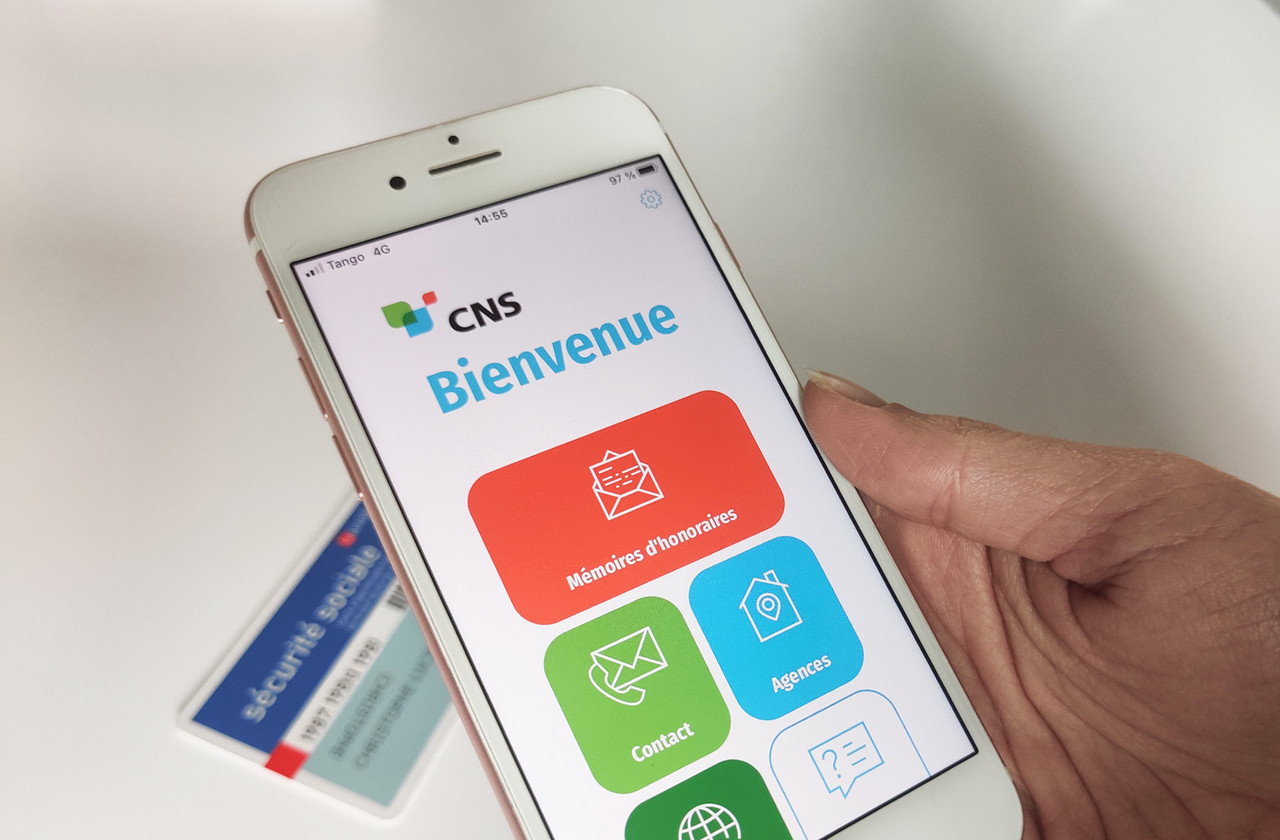Announced by the ministers of health and social security, Paulette Lenert (LSAP) and Romain Schneider (LSAP), a few weeks ago, the new CNS application, the "CNSapp", can be downloaded from the App Store since 22 October. It should be available in a few days on Android, according to the ministry of social security.
As a first step towards the digitalisation of relations between insured persons, health professionals and health insurance organisations, the application allows users to send their reimbursement requests to the CNS digitally via the application. Members can access the fee statements on the application and, through this, can submit their claims to the CNS digitally. Later on, other documents will gradually be digitised, such as certificates of incapacity for work, prescriptions, etc.
A dedicated FAQ on the CNS website
How does it work in practice? First of all, the CNSapp must be downloaded. Then, users have two options. Either they have already activated their e-health account, or shared medical file (DSP), in which case they must use the user number and password that have already been set. If they have not yet activated their e-health account, they must take the letter sent by the eSanté agency containing their activation code. If they do not have it, or if they have lost it, they should contact the helpdesk by e-mail at [email protected], or by telephone on (+352) 27 12 50 18 33.
They can also ask their doctor to issue a QR code that will allow them to proceed with the activation. The doctor can issue such a code by checking their data (identity card, telephone number, etc.). To answer any questions, an FAQ has been put online on the CNS website.
The AMMD also has its own application
Once the e-health account has been activated, the doctor will be able to send the statement of fees electronically or on paper during a consultation. If the user chooses the digital solution and pays the bill at the doctor's, he or she can transfer the bill directly to the CNS in order to be reimbursed. If they do not pay the bill on the spot, they will send the paper document to the CNS as usual. This document will contain a QR code that will allow the CNS to process it more quickly.
If one does not wish to use the digital option, the paper option is still available, but with “longer processing times for claims at the CNS than with the digital version,” says the CNS on its website.
It should be noted that the Digital Health network (DHN)--an initiative of the Association of Doctors and Dentists (AMMD)--also offers its own free application, the GesondheetsApp. With an active e-health account, users can book medical appointments, share digital documents, benefit from accelerated reimbursement and manage the healthcare administration of people under their guardianship.
As a reminder, the digital platform set up by the government is intended to speed up the reimbursement of medical bills, the first step towards immediate direct payment (PID) in 2023--also known as third-party payer. Until 2023, an advance payment by the insured will still be necessary. From 2023 onwards, the PID is to be introduced, which will limit payment to the amount not covered by the health and maternity insurance.
This digital advance is taking place in parallel with the rise of the shared medical file (DSP). And the director of the Agence eSanté, that "by December 2021, the agency's challenge was to set up 850,000 shared care records. By December 2020, 18 months after its launch phase, we were already at more than 900,000 shared care records that are usable by healthcare professionals."
This story was first published in French on . It has been translated and edited for Delano.
